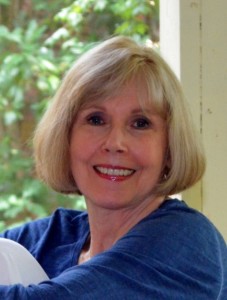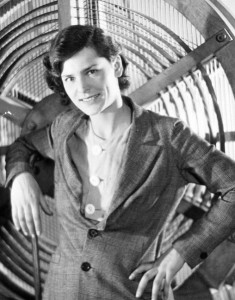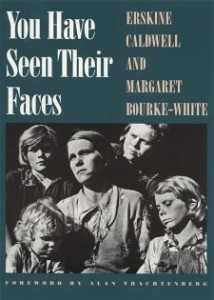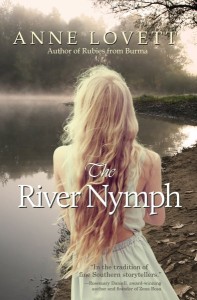Historical fiction author Anne Lovett highlights the demanding career of pioneer photographer Margaret Bourke-White.
~~~
 Relevant History welcomes back Anne Lovett, author of Rubies from Burma, named one of the best 100 Indie books of 2017 by Kirkus Reviews, and Maggie Award of Excellence finalist Saving Miss Lillian. With degrees from Emory University and Georgia Tech, she is the mother of three mostly adult children and lives in Atlanta with her model-railroader husband. The River Nymph is her latest release. To learn more about her and her books, visit her web site, and follow her on Facebook, Twitter, Instagram, and Pinterest.
Relevant History welcomes back Anne Lovett, author of Rubies from Burma, named one of the best 100 Indie books of 2017 by Kirkus Reviews, and Maggie Award of Excellence finalist Saving Miss Lillian. With degrees from Emory University and Georgia Tech, she is the mother of three mostly adult children and lives in Atlanta with her model-railroader husband. The River Nymph is her latest release. To learn more about her and her books, visit her web site, and follow her on Facebook, Twitter, Instagram, and Pinterest.
*****
In The River Nymph, released 15 July 2019, Augusta Pemberton idolizes Margaret Bourke-White and wants to follow in her adventurous footsteps. I’ll confess to a bit of artistic license in my novel for the sake of the story.
 Born in 1904 Cleveland to second-generation immigrants, her father of Polish descent and her mother of Irish, Margaret White—called Maggie by her family—really didn’t begin her career until 1927. She studied at the Clarence H. White School of Photography but also spent time at four different universities.
Born in 1904 Cleveland to second-generation immigrants, her father of Polish descent and her mother of Irish, Margaret White—called Maggie by her family—really didn’t begin her career until 1927. She studied at the Clarence H. White School of Photography but also spent time at four different universities.
She studied life sciences and design, unable to decide on a career, before finally graduating from Cornell. Unable to find a job in Ithaca, she thought of earning money by photographing the school. Her success and pleasure in selling that work made the career decision for her.
Leaving an unfortunate marriage, she returned to Cleveland and changed her name to include her mother’s surname, Bourke. Then she opened a studio where, over male objections, she pursued industrial photography. She had memories of her late father, an inventor, taking her into the mills when she was a child. At that impressionable age, she thought the metal glowing and the sparks flying were “the beginning and the end of all beauty.”
In Cleveland she visited the Otis Steel Mills and was allowed to photograph there despite the protests of men, who thought women were too delicate for that kind of work. She shrugged and invented a new kind of magnesium flare in order to capture the fiery operations inside, as black-and-white film of the day was unable to distinguish red from black. She made strides in architectural photography as well. Her courage and determination led her to ascend tall buildings and perch on precarious ledges in order to capture the images she desired.
Henry Luce, magazine magnate, noted her amazing work, and hired her as a staff photographer for Fortune in 1929. When Luce decided the public needed a magazine devoted to photography, Life was born, and Margaret was hired on staff. Her photograph of Montana’s Fort Peck Dam, resembling an Art Deco version of medieval ramparts, appeared on the cover of Life’s first issue.
 After an assignment for Life in Russia, she became interested in the lives of workers and in social conditions. As the Depression sank into the nation, she teamed with Georgia native Erskine Caldwell for a book, You Have Seen Their Faces.
After an assignment for Life in Russia, she became interested in the lives of workers and in social conditions. As the Depression sank into the nation, she teamed with Georgia native Erskine Caldwell for a book, You Have Seen Their Faces.
Caldwell was not enthused about working with a woman and quarreled with her, but during the trip they overcame their differences and fell in love. They were married later, but Erskine wanted her to stay home like a good Southern wife. Staying home when she could be out with her camera? That was not Maggie’s way. The marriage fell apart.
Margaret Bourke-White went on to have a storied career, becoming the first female war photographer during World War II, and later capturing images of the great and powerful as well as the meek and lowly. A pioneer in photojournalism and the photoessay, she was widely honored for her work. She was inducted into the National Women’s Hall of Fame in 1990.
In 1953, she was diagnosed with Parkinson’s disease. Forced by her illness to resign from Life in 1957, she spent time writing essays, lecturing, and writing her biography, A Portrait of Myself, and went on to publish eleven books. She died in 1971, aged 67.
*****
 A big thanks to Anne Lovett! She’ll give away one paperback copy and one Kindle ebook copy of The River Nymph to two people who contribute a comment on my blog this week. I’ll choose the winners from among those who comment by Friday at 6 p.m. ET. For the paperback, delivery is available in the U.S. only. Delivery is available worldwide for the electronic copy.
A big thanks to Anne Lovett! She’ll give away one paperback copy and one Kindle ebook copy of The River Nymph to two people who contribute a comment on my blog this week. I’ll choose the winners from among those who comment by Friday at 6 p.m. ET. For the paperback, delivery is available in the U.S. only. Delivery is available worldwide for the electronic copy.
**********
Did you like what you read? Learn about downloads, discounts, and special offers from Relevant History authors and Suzanne Adair. Subscribe to Suzanne’s free newsletter.

As a long-time fan of the photographer, I find this approach to a novel really interesting.
I’m old enough to remember a lot about Margaret Bourke-White, but I didn’t know about the industrial photography. I’m wondering how your book, River Nymph, follows her career. (Sounds like a good one!)
Margaret Bourke-White is my character Gussie’s inspiration for wanting to become a photographer, but the book doesn’t follow her career. I read a good deal about her to get a sense of what photography was like in the era of my book.I also used her work to get a good sense of sharecroppers’ lives back then.
A splendid way to do research for your intriguing story, Anne. I had heard of Margaret Bourke-White but not what her accomplishments were. Now I know the back story to your story! I’m sure Gussie is as steadfast as Margaret was, and I look forward to reading your latest to find that out.
It was so exciting for me to read that your book is about Margaret Bourke White. I am an 86 year old woman with very fond memories of NY City in the mid 50’s. I worked for WABC Radio and met and married Richard Dean who, in 1956, had just left a 3 year stint with LIFE as an assistant photographer to start his career as a free lance Industrial Photographer. He did not assist Margaret Bourke White directly but knew her on a first name basis and took an amazing portrait of her that she said (in a thank you note to Dick) was the best one ever taken of her. I could never compete with a professional author such as you or Suzanne Adair, and don’t want to, but I have written and published my memoirs. It’s titled “My Halcyon Years” and is available on Amazon. I cover that time and her portrait is proudly displayed there. Historical Fiction is my favorite type of book and I can’t wait to read “River Nymph” and your other books. Best wishes
Your memoir sounds really interesting, Virginia.
Thanks, Anne. I have been pleased with the interest of so many to my book. That was an invigorating and upbeat time and you were right to research the photography of that day. It is years apart from how it is now. In one chapter I mention how my husband and I made a room in our apartment into a quasi-studio and darkroom. We’d actually process the film there and then after printing the pictures we’d wash them in the bathtub and then hang them on a wire we’d strung across the room. It was kind of a Rube Goldberg set-up but it worked.
Really interesting article. I enjoyed reading about the achievements of a woman of her time.
Margaret sounds like my kind of woman who forged her own way in a man’s domain . Her creativity was her guide and the passion she had for photography gave her life direction . So glad to tuck her away as someone to learn more about.
I know nothing about Margaret Bourke-White, so I’m totally excited to learn more through the eyes of your novel. To be honest, yours are the only fiction books I read, and when based on non-fiction, sounds like the best combination ever! Thanks for this.
Your article points out the highs and lows of an adventurous life. Margaret Bourke-White had much success as a photographer and later wrote numerous books while suffering from a serious illness. Although her marriages apparently fell apart, Bourke-White pursued her dreams. She now lives on as an inspiration, which is pretty cool.
As a retired photographer and journalist – my hands shake too badly to take photos often now – I have admired Margaret Bourke-White for decades. I researched female WARCOS some years ago for a project so she was one of the prominent ones. Kate Adie (BBC) was another and I got to meet her.